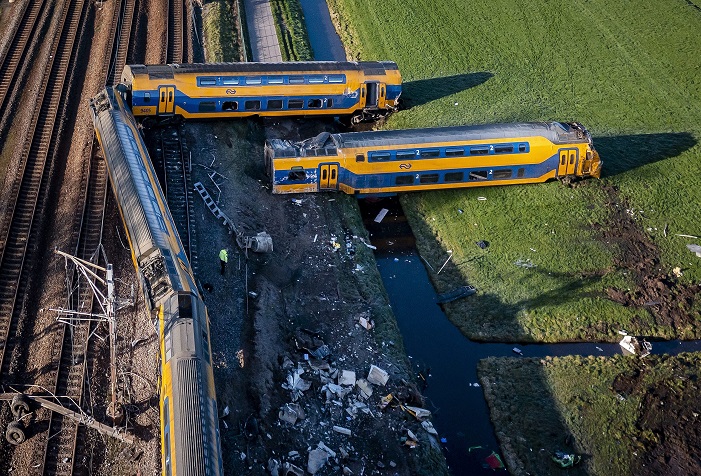Train accidents are tragic events that can leave a lasting impact on passengers, families, and communities. With my experience in this area, I’ve come to realize how crucial it is to understand the causes, effects, and prevention strategies associated with train accidents. In this article, I’ll take you through the main reasons these accidents happen, the toll they take, and what can be done to reduce the risk of such events.
What Exactly Is a Train Accident?
A train accident is any incident that results in damage, injury, or death involving a train. These accidents can include:
- Derailments: When a train leaves the track.
- Collisions: Accidents where a train strikes another vehicle, another train, or an obstacle.
- Accidents at Rail Crossings: Where vehicles or pedestrians are involved in accidents with passing trains.
- Fires and Explosions: Often occurring when a train is carrying hazardous materials and suffers an accident.
These accidents range from minor incidents, like a minor collision at a crossing, to catastrophic events like major derailments involving hazardous chemicals. Each type requires specific safety measures and solutions.
What Causes Train Accidents?
There are several factors that contribute to train accidents. Based on my experience and observations, here are the key causes:
1. Human Error
Human mistakes are still one of the most common causes of train accidents. Whether it’s a train operator misjudging speed, failing to follow signals, or an error during maintenance, the human element can lead to disastrous consequences. Even simple mistakes like forgetting to set the brakes can cause major incidents.
2. Mechanical Failure
Train systems, while generally reliable, can experience mechanical issues. Faulty brakes, engine problems, or issues with the train’s wheels or axles can lead to accidents. In many cases, these issues can be prevented with routine maintenance and inspections. Unfortunately, when mechanical failure is not caught in time, it can result in significant damage.
3. Track Problems
The condition of the tracks plays a huge role in train safety. Tracks that are not regularly inspected can develop cracks, misalignments, or wear down over time. A broken rail can cause a train to derail or cause a collision if the train cannot stop in time. In some cases, weather can impact the track’s integrity, causing unexpected problems.
4. Weather Conditions
Extreme weather can make train travel hazardous. Heavy snow, rain, and fog can obscure the track, while slick conditions can make it harder for trains to stop or stay on track. In areas prone to severe weather, additional precautions are often necessary to keep trains running safely.
5. Negligence at Rail Crossings
Accidents at rail crossings are unfortunately common. These incidents usually occur when drivers or pedestrians ignore crossing signals, drive around barriers, or are unaware of approaching trains. This negligence can have deadly consequences, especially if the crossing is in a high-traffic area.
What Are the Consequences of Train Accidents?
Train accidents, especially large ones, can be devastating. Here’s a closer look at the possible consequences:
1. Loss of Life and Injuries
One of the most heartbreaking consequences of train accidents is the loss of life. The severity of injuries can vary, but many passengers and crew members suffer from broken bones, head trauma, or, in the worst cases, death. The emotional impact on families is immeasurable.
2. Environmental Damage
When a train accident involves hazardous materials, the environmental toll can be severe. Toxic chemicals or oil spills can contaminate rivers, soil, and air, causing long-term ecological damage. Cleanup efforts are costly and can take years to fully address the environmental impact.
3. Economic Costs
Accidents cause massive disruptions in rail services, leading to delays in transporting goods and passengers. The financial cost of an accident includes medical bills, repairs, legal settlements, and compensation to victims. The economic impact can stretch far beyond the immediate area of the accident, affecting the economy in more ways than one.
4. Emotional and Psychological Impact
The psychological effects of train accidents are often overlooked. Survivors may experience PTSD, anxiety, or depression following the trauma. Families of victims often struggle to cope with their grief. Communities affected by these accidents may also feel a lasting emotional toll.
How Can Train Accidents Be Prevented?
Preventing train accidents is crucial, and there are several strategies that can help minimize the risk. Based on my experience, here’s how we can reduce the chances of these tragic events:
1. Improved Training for Train Operators and Staff
Training is key to ensuring the safety of both passengers and crew. Operators should be trained to handle all potential situations, including extreme weather, mechanical failures, and emergencies. Routine safety drills and up-to-date training ensure that everyone knows what to do in case of an incident.
2. Routine and Comprehensive Maintenance
Regular maintenance of trains, tracks, and signaling systems is essential. This includes checking the condition of the rails, ensuring that brakes and engines are in working order, and confirming that all safety equipment is functioning correctly. Many accidents could be prevented with better and more frequent inspections.
3. Advanced Technology
The use of modern technology can significantly reduce human error. For example, automated braking systems can stop a train if it’s approaching an obstruction too quickly. Advanced signaling systems can ensure that trains are operating on safe tracks, and real-time data about weather conditions can help operators make better decisions.
4. Public Education and Awareness
Educating the public about the dangers of rail crossings is crucial. Pedestrians and drivers should always be aware of signals and barriers. Raising awareness through campaigns, especially in high-risk areas, can help prevent accidents at crossings.
5. Upgrading Rail Infrastructure
Investing in better rail infrastructure, such as modernized tracks and improved communication systems, can help reduce accidents. Installing barriers at crossings, better signage, and lights can also enhance safety.
Conclusion
Train accidents are devastating and can have long-lasting effects on everyone involved. However, by understanding the causes and consequences, and by implementing preventive measures, we can work towards reducing the number of accidents. Regular maintenance, better training, advanced technologies, and public awareness campaigns are all critical components of a safer railway system.


